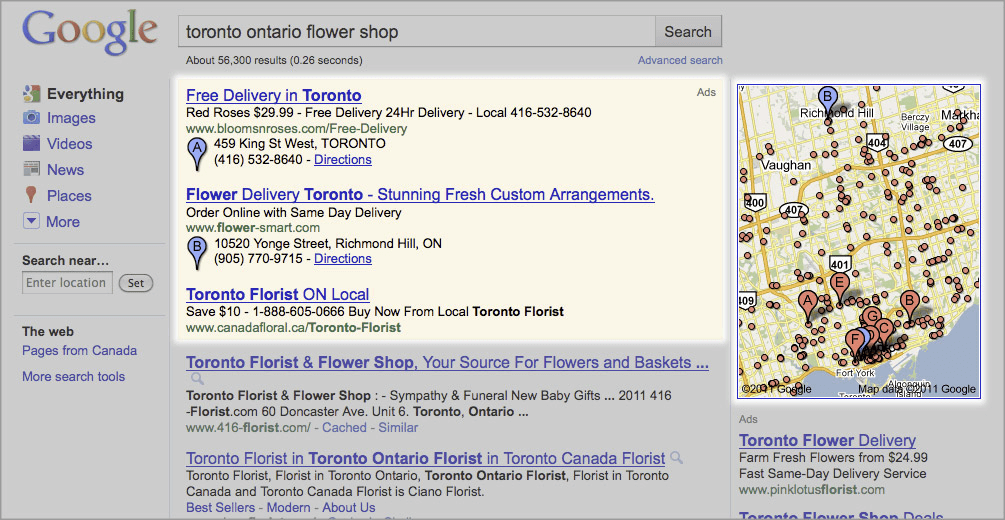Note: This article is specifically for websites created using a Legacy version of HostPapa Website Builder. If you purchased the Website Builder + Business Email bundle, check this article for more information.
If you are unsure of what Website Builder version you have, please get in touch with our support team.
If part of your website’s intent is to be relevant to local searchers, then optimizing your site for local search is a must.
Because local search results are now being placed very highly in the search engine results pages, the competition is steep and it’s important to make sure your site is well optimized for local search.
A local search scenario:
Julia owns a flower shop in Toronto, Ontario that specializes in weddings. In general, all of Julia’s customers are going to come from in and around Toronto. The shop is not going to be providing services to people in Miami, Florida. So, it’s important for Julia’s website to reach searchers in and around Toronto looking for the services she provides.
How are local search results displayed?
A local search is a query that involves a keyword along with a geographic location. Looking back at Julia’s flower shop in Toronto, Ontario, a local search could be: toronto ontario flower shop or something similar.
You will see displayed in the graphic next to the map flower shops right in Toronto.

Optimizing your site for local search
Here are eight ways to get started:
1. Publish your site to a local domain name.
A site with the .ca extension, which is local to Canada, will shout very loudly to the search engines that this business operates in Canada.
2. Give your pages geo-specific, descriptive meta tags (title, description, keywords) including your zip/postal code.
This means that your meta tags should include the main keyword for your page as well as your location. Examples of a geo-targeted title tags would be:
-
- Speciality Flower Shop – Toronto, Ontario 66777
-
- Wedding Florist – Toronto, Ontario 66777
It’s easy to add these tags to your HostPapa Website Builder site. Click on Page > Page Properties > Metadata to access the fields to enter your tags. Here is a link to a tutorial with more detailed information on this topic: Adding title, description and keywords tags.
3. Make sure you have contact information, including your physical address and phone number, in text on every page of your site.
Search engines read text, not graphics. An easy way to do this is to add a footer to each page of your site. You can do this by dragging a Text Widget to the bottom of your page and entering your contact details there.
4. Add your location to your image alt text.
If you have an image of your flower shop on your site, you could give it the image alt text Julia’s Flower Shop, Toronto, Ontario. Here is a link to more information on this: Adding alt text to images.
5. Submit your site to Google’s Local Business Centre.
Here is a link with more information: Google Local Business Centre.
6. Submit your site to local directories.
Examples include Yellowpages.com, SuperPages.com, InfoSpace.com, InsiderPages.com, Local.com, etc.
7. Send an email to local establishments.
For example, contact your Chamber of Commerce or another local business that complements yours (a complementary local business for a flower shop might be a catering business). Request a link to your website from theirs or to do a link exchange.
8. Look for blogs and forums that focus on your topic.
Making comments on blogs written by people in your area (good comments, not spam comments) is an excellent way to improve visibility.
These techniques for promoting your site locally are also good for your overall SEO. Keep in mind that competition for local search is high. Performing these techniques doesn’t mean your site will automatically receive high placement for localized searches, but it will definitely help.
